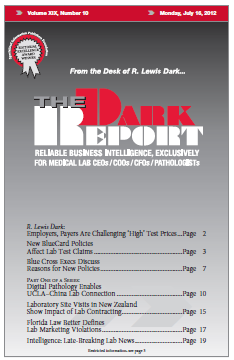CEO SUMMARY: In some ways, the story of the New Zealand’s health system’s 15-year strategy to reduce the cost of clinical laboratory testing is a cautionary tale for public laboratory companies in the United States. During THE DARK REPORT’S site visit to several private labs in New Zealand last week, the consequences were easily seen …
Lab Site Visits in NZ Show Impact of Lab Contracting Read More »
To access this post, you must purchase The Dark Report.


